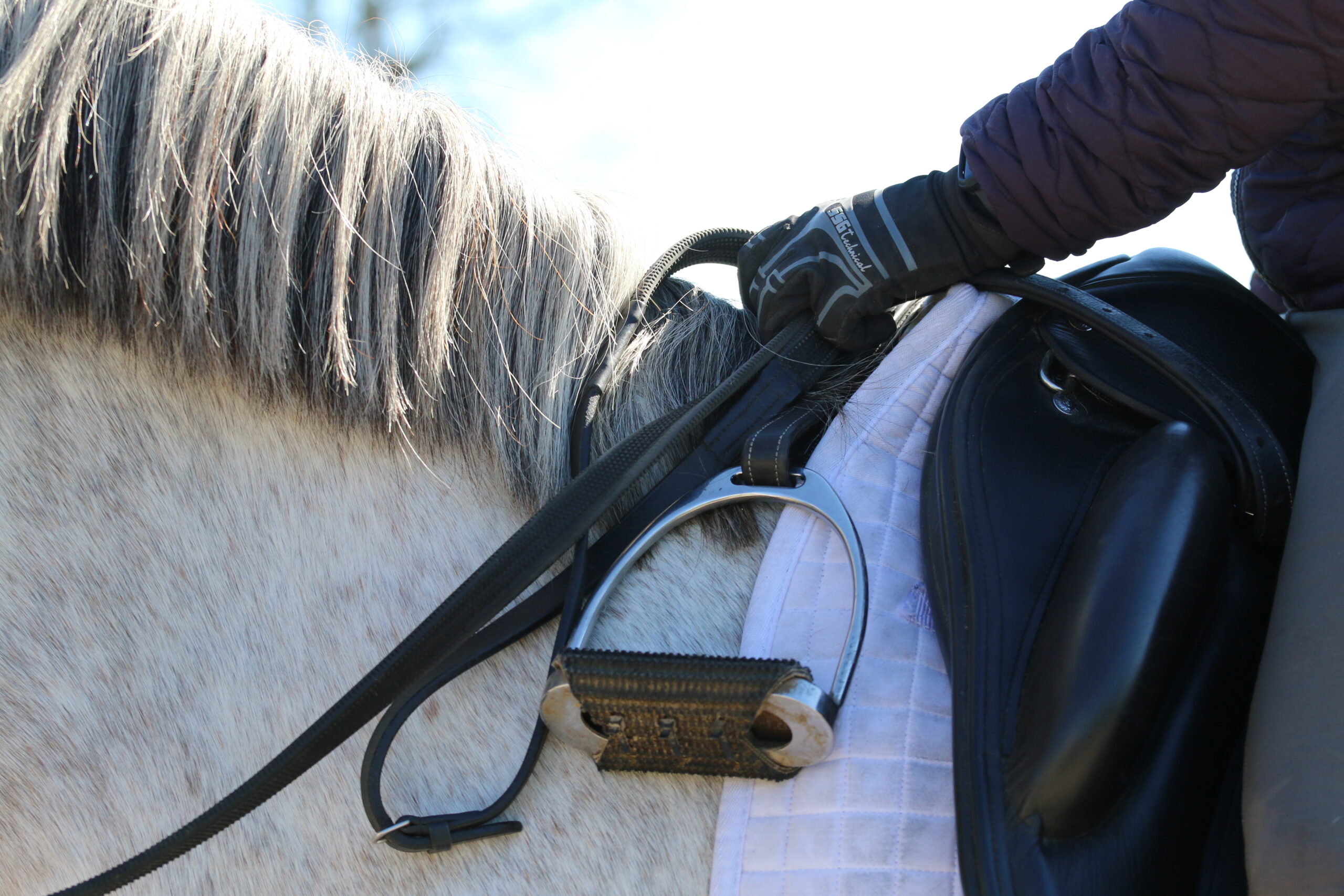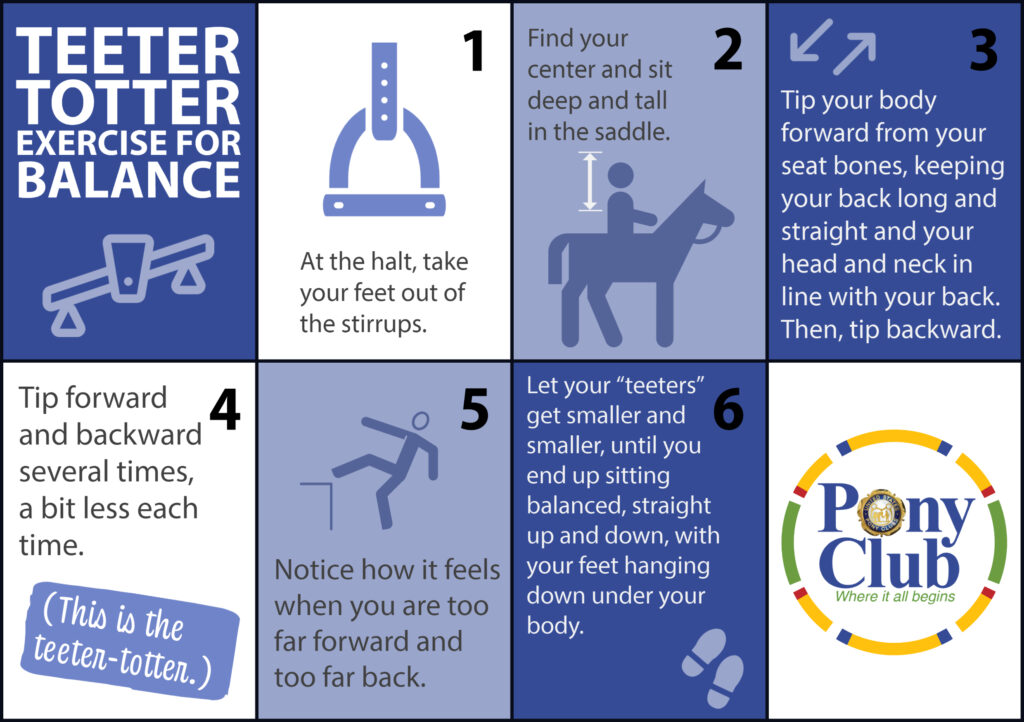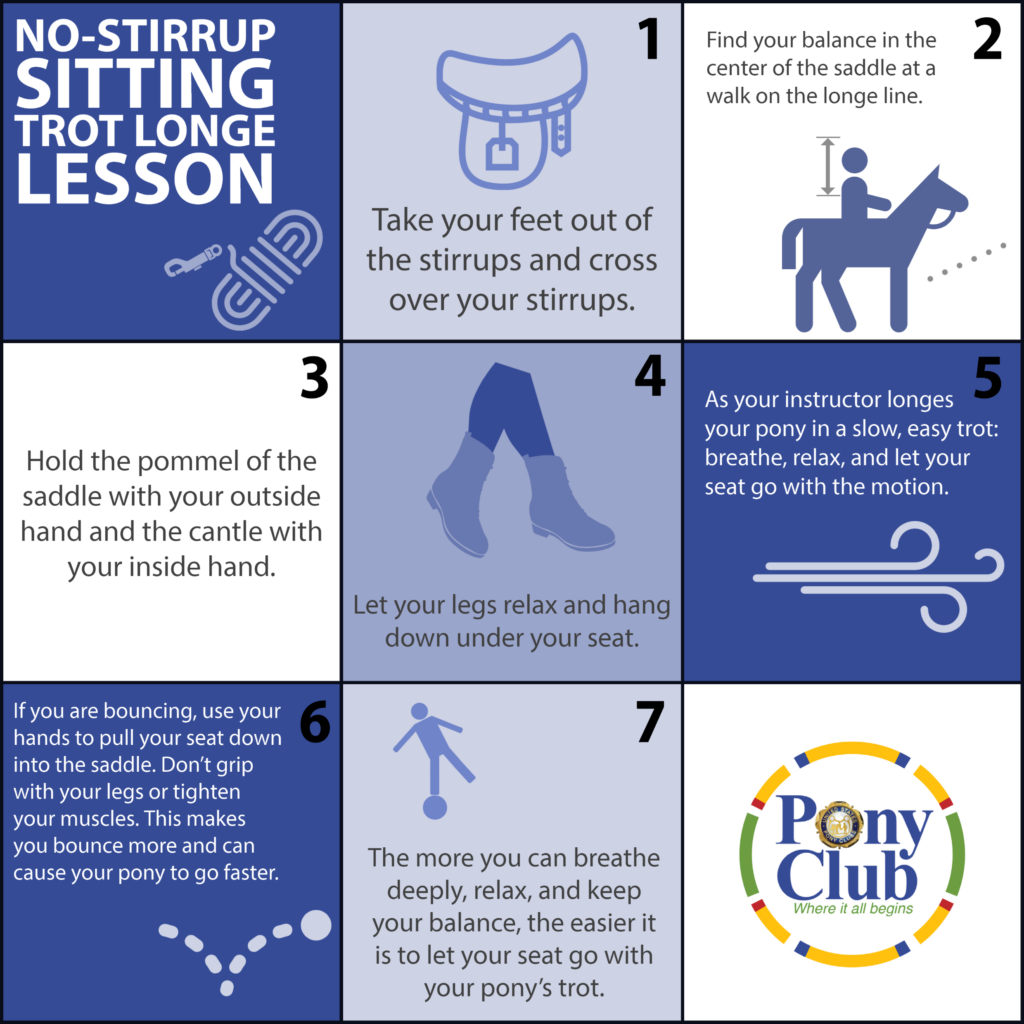
No Stirrups November for Beginners
No-Stirrups November is trending right now. Are you ready to give it a try? The benefits of riding without stirrups include strong legs, suppleness, and a more secure and independent seat. It’s also good to practice riding without stirrups so that you’ll be prepared in case you lose a stirrup while riding.
For no-stirrups work, cross your irons over the front of the saddle so that they don’t bang into your horse’s sides. (Move the buckle on the stirrup leather away from the stirrup bar so that it doesn’t create a lump under your leg.) Or, you can remove them from the saddle if you plan to do a lot of no-stirrup work. You may want to add a neck strap (also called a safety strap or grab strap) that you can hold on to for balance, to avoid hanging on the reins or pulling on your horse’s mouth by accident.
If you’re ready to drop your stirrups this November, here are some tips and exercises from the USPC Manual of Horsemanship to make the most of it.
For Beginners (D Level)
A great exercise to start with is the Teeter-Totter. This exercise helps to improve your balance. You’ll learn how to find your best balance sitting in the saddle, and how to feel when you are out of balance, leaning too far forward or back.
Teeter Totter Exercise for Balance
Sitting Trot Without Stirrups Longe Lesson
The best way to learn to sit the trot is on a longe line, working with your instructor. Do a little bit of trotting at a time, and gradually work up to sitting the trot longer and without holding on. Here are some tips to do this correctly.
No-Stirrup Sitting Trot Longe Lesson






